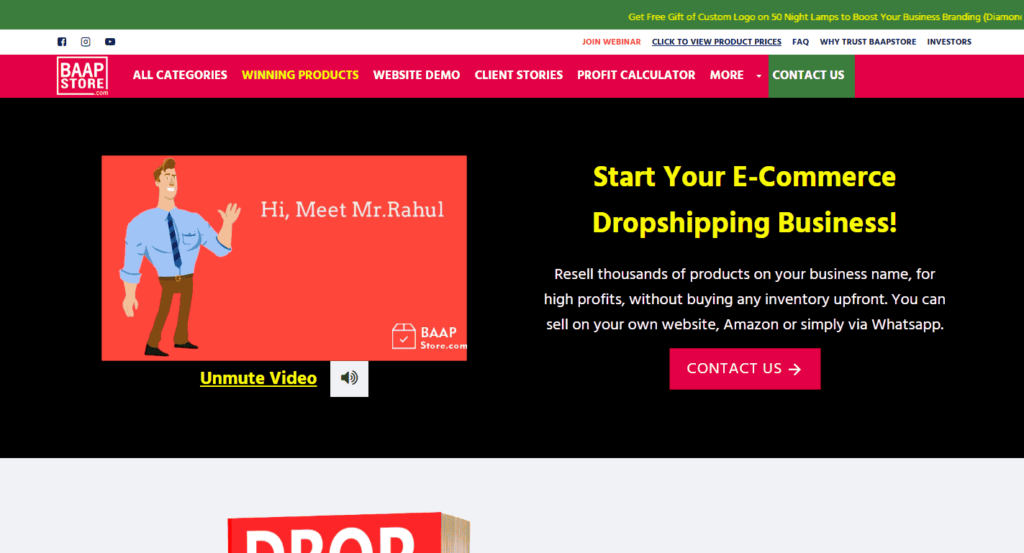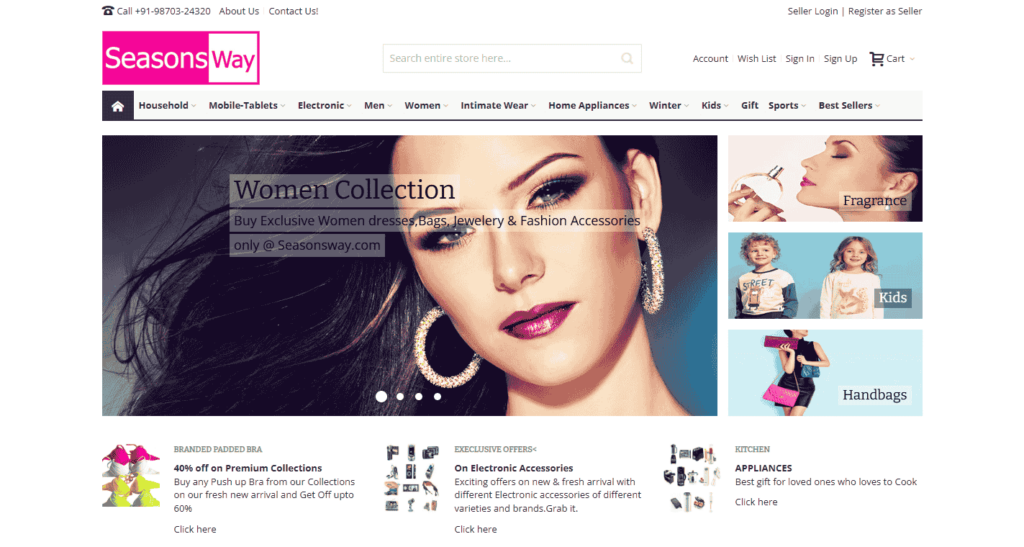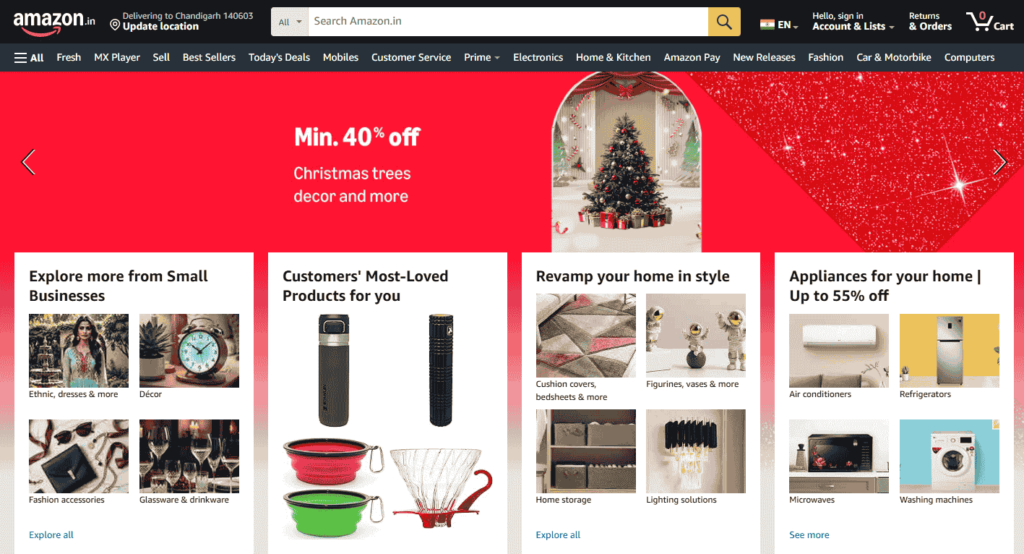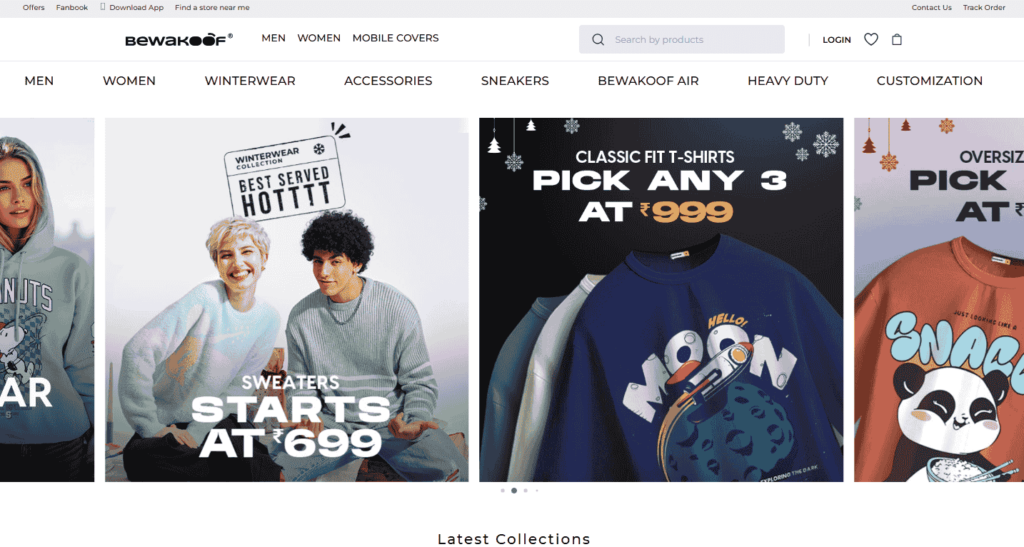Ecommerce and dropshipping have become two of the most popular business models for entrepreneurs. But when it comes to choosing the right one for your new online venture, how do you know which is better for you? Ecommerce and dropshipping both have distinct characteristics, advantages, and challenges that can affect your business success. Let’s break down everything you need to know about dropshipping vs ecommerce, helping you make an informed decision.
Table of Contents
What is Dropshipping?
Before we go ahead with the comparison, it’s important to understand what dropshipping is all about. At its core, dropshipping is a business model that allows you to sell products to customers without ever holding any inventory. Instead, when a customer places an order in your online store, the order is forwarded to a dropshipping supplier who handles everything from inventory storage to product shipping.
Who is a Dropshipper?
A dropshipper is essentially the middleman between the customer and the dropshipping supplier. They are responsible for marketing and selling products through their online store, but they don’t physically handle the products themselves. Their job is to promote and sell the products, receive the order, and forward it to the dropshipping supplier for fulfillment. The dropshipper makes a profit by selling the product at a markup from the supplier’s price.
Who Are Dropshipping Suppliers?
Dropshipping suppliers are third-party vendors who manage the inventory and fulfillment for your dropshipping business model. These suppliers store the products, manage the inventory, and ship them directly to the customer when an order is placed. As a dropshipping store owner, you don’t need to worry about warehousing or fulfillment; the supplier handles all of that.
Also read: What is Quick Commerce
Examples of Dropshipping
1. Meesho

One of the biggest names in India’s dropshipping and ecommerce space, Meesho provides a platform where individuals can start their online business without maintaining an inventory. Sellers can select products from wholesalers listed on the platform and promote them to their networks. Meesho manages the order fulfillment and ensures the product is shipped directly to the customer. This platform has democratized entrepreneurship, especially for those with limited resources.
2. Baapstore

Baapstore is a well-known dropshipping store that offers a wide range of products, including tech gadgets, home decor, and lifestyle items. Their business model relies on partnering with reliable dropshipping suppliers, ensuring they don’t need to maintain their own inventory. The ease of setting up an online store with Baapstore’s support has attracted many budding entrepreneurs looking to start a dropshipping business.
3. Seasonsway

Seasonsway specializes in selling fashion products, accessories, and seasonal items. Their dropshipping model allows them to work with third-party suppliers who handle the order fulfillment. This enables them to focus on marketing and customer service while ensuring customers receive high-quality products directly from the supplier.
How to Start a Dropshipping Business?
Starting a dropshipping business involves a few simple steps. Here’s how you can get started:
1. Partner with a Dropshipping Supplier
Find a reputable dropshipping supplier who aligns with your niche and offers products with good product quality and reliable shipping methods.
2. Set Up an Online Store
Create an online store where customers can browse and place orders. You can use an ecommerce platform like Shopify or WooCommerce to set up your store.
3. Receive a Customer Order
Once a customer places an order in your store, you’ll receive the order details and payment.
4. Forward the Order to the Supplier
You forward the order to your dropshipping supplier who handles the fulfillment.
5. Supplier Prepares and Ships the Product
The dropshipping supplier prepares the product and ships it directly to the customer.
6. Customer Receives the Product
The product is delivered to your customer, and you’ve made a sale without ever touching the product.
Also read: B2C vs D2C: Key Differences between e-commerce models and which is better
Pros and Cons of Dropshipping
Like any business model, dropshipping has its ups and downs. Let’s explore some of the pros and cons of running a dropshipping business.
Pros of Dropshipping
- Low Initial Investment: You don’t need to spend a lot of money upfront to purchase inventory or rent warehouse space. You can run your business from anywhere with an online store.
- No Inventory Management: Since you’re not holding any products, you don’t have to worry about inventory or warehouse management.
- Scalable: The dropshipping model allows you to scale easily. As you grow, you can add more products or work with additional dropshipping suppliers without major overhead costs.
- Flexible Location: You can run your dropshipping business model from anywhere as long as you have an internet connection.
- Variety of Products: You can sell a wide range of products, and if one doesn’t work, you can easily switch to another without any hassle.
Cons of Dropshipping
- Lower Profit Margins: The main downside of dropshipping is that your profit margin is often lower than traditional retail models. You’re relying on suppliers to fulfill your orders, and they may charge higher prices.
- Limited Control Over Product Quality: Since you don’t physically handle the products, you have less control over the product quality and shipping times. This can impact the customer experience.
- Competition: Because the barrier to entry is so low, there’s often a lot of competition in the dropshipping business. You’ll need to focus on brand building and unique marketing strategies to stand out.
What is Ecommerce?
Ecommerce, short for electronic commerce, is the buying and selling of goods or services using the internet. Unlike dropshipping, ecommerce often involves businesses that hold inventory and fulfill orders themselves. An ecommerce business can sell products directly to the customer, either through their own website or through third-party marketplaces like Amazon.
Key Features of Ecommerce Businesses
- Online Storefronts: An ecommerce business typically operates an online store where customers can browse products, read descriptions, and make purchases.
- Payment Processing: Ecommerce platforms handle payment processing, allowing customers to pay via credit cards, debit cards, and digital wallets.
- Customer Support: An ecommerce business often provides customer support for questions, returns, or issues with their products.
Examples of Ecommerce
The ecommerce business model has revolutionized how products are bought and sold, with successful businesses thriving in various formats. Here are some notable examples:
1. Amazon

Amazon is the global leader in ecommerce, connecting millions of buyers and sellers on its platform. It operates as an ecommerce marketplace, allowing third-party sellers to list their products alongside Amazon’s own inventory. Known for its vast product range, efficient fulfillment method, and exceptional customer experience, Amazon has set the benchmark for ecommerce businesses worldwide. Sellers benefit from tools like Amazon FBA (Fulfilled by Amazon), where Amazon handles storage, order fulfillment, and shipping.
2. Bewakoof

Bewakoof exemplifies the Direct-to-Consumer (DTC) model, where a business owner sells products directly to customers through its ecommerce platform. Specializing in fashion and lifestyle products, Bewakoof manages its own inventory, giving it complete control over product quality and branding. This model allows the company to build strong customer relationships, create unique products, and maintain higher profit margins without relying on intermediaries.
3. IndiaMart

IndiaMart is a leading ecommerce platform for B2B transactions, connecting buyers and sellers of wholesale goods. As one of the largest online marketplaces in India, it focuses on bulk purchasing and facilitating trade for businesses of all sizes. IndiaMart’s model bridges the gap between suppliers and business buyers, offering a seamless process for order fulfillment and enhancing the overall customer experience in the B2B sector. It’s a go-to platform for businesses looking to source products efficiently.
How an Ecommerce Business Works
Running an ecommerce business model involves managing several elements to ensure smooth operations. Here’s a breakdown of the key components:
- Online Storefronts: Your ecommerce store is the primary interface between you and your customers.
- Product Catalog: A detailed list of products available for purchase in your ecommerce store.
- Shopping Carts: Customers add items to their shopping cart before completing the checkout process.
- User Accounts: Customers may create user accounts for faster checkouts and to track their order history.
- Product Selection: You curate a range of products for your ecommerce business, which could be based on market trends, customer demands, or niche preferences.
- Checkout Process: After customers review their selections, they proceed to checkout to complete their purchase.
- Payment Processing: A secure payment gateway processes transactions to finalize sales.
- Order Confirmation: Once payment is processed, the customer receives an order confirmation email.
- Inventory Management: Inventory must be regularly updated to reflect products that are in stock or out of stock.
- Fulfillment and Shipping: The fulfillment process begins when an order is placed, and the product is shipped to the customer.
- Delivery and Tracking: The customer receives tracking information for their order and waits for delivery.
- Returns and Customer Support: An efficient return policy and customer support help manage customer concerns.
- Data Security: Ensure that customer data, especially payment information, is securely stored and protected.
- Reviews and Feedback: Encouraging reviews helps build credibility and provides valuable insights for improvement.
- Marketing and Promotion: Successful ecommerce businesses rely on marketing strategies like SEO, social media, and paid ads to drive traffic and sales.
Also read: 101 Guide: Start an E-Commerce Business in India
Pros and Cons of Ecommerce Model
Pros of Ecommerce Model
- Full Control Over Product Quality: Unlike dropshipping, ecommerce gives you complete control over the product quality and fulfillment process.
- Higher Profit Margins: By sourcing products directly from manufacturers, you can often enjoy better profit margins.
- Branding Opportunities: With ecommerce, you can focus more on brand development, customer loyalty, and creating a unique shopping experience.
- Stable Shipping Times: Because you control the inventory, you can provide more predictable shipping times.
Cons of the Ecommerce Model
- Higher Initial Investment: Starting an ecommerce business often requires more capital for inventory, warehousing, and fulfillment.
- Inventory Management: You must handle inventory, which can be time-consuming and costly.
- Risk of Overstocking or Understocking: Poor inventory management can lead to either surplus stock or stockouts, impacting sales.

Dropshipping vs Ecommerce: Key Differences
The key differences between dropshipping and ecommerce lie in inventory management, fulfillment methods, and control over the business process. Let’s look at these factors:
Initial Investment
Starting a dropshipping business requires less capital, as you don’t need to purchase inventory upfront. In contrast, ecommerce often requires a more significant investment to stock products.
Inventory Management
In dropshipping, you don’t need to worry about inventory or warehouse management, as that’s handled by the dropshipping supplier. With ecommerce, you must manage your inventory, which requires more attention and resources.
Shipping and Logistics
In dropshipping, the shipping process is handled by the supplier, while in ecommerce, you typically manage the shipping logistics yourself.
Profitability
Ecommerce businesses tend to have higher profit margins since they buy products in bulk and sell them at a markup. Dropshipping typically has lower margins due to the supplier’s involvement.
Customer Experience
Ecommerce businesses generally provide a better customer experience since they control the product quality, fulfillment process, and shipping times. In dropshipping, you rely on third-party suppliers, which can sometimes lead to delays or product quality issues.
Ease of Business
Dropshipping is easier to start and manage since you don’t have to worry about inventory management or fulfillment. Ecommerce, on the other hand, requires more hands-on involvement, but it gives you more control over the overall business process.
Risk
With dropshipping, the risk is lower as you don’t have to invest in inventory. In ecommerce, there’s a higher risk due to upfront investment in inventory and fulfillment.
Below is a table summarizing the key differences between dropshipping and ecommerce based on critical factors:
| Factor | Dropshipping | Ecommerce |
| Initial Investment | Requires less capital as you don’t purchase inventory upfront. | Requires a significant investment to stock products and set up the business. |
| Inventory Management | No need to manage inventory or warehouses; handled by the dropshipping supplier. | Requires managing your own inventory, which demands resources and attention. |
| Shipping and Logistics | The supplier handles the shipping process. | You manage shipping logistics and have complete control over the process. |
| Profitability | Lower profit margins due to the involvement of third-party dropshipping suppliers. | Higher margins as products are bought in bulk and sold at a markup. |
| Customer Experience | Relies on third-party suppliers, which can lead to delays and product quality issues. | Provides a better customer experience with control over product quality, shipping, and fulfillment. |
| Ease of Business | Easier to start and manage with minimal hands-on involvement. | More demanding as it involves inventory management, shipping, and hands-on processes. |
| Risk | Lower risk as there’s no upfront investment in inventory. | Higher risk due to upfront investment in inventory and operational costs. |
Also read: 44 Different Types of Marketing to Promote Your Brand
Similarities Between Dropshipping and Ecommerce
Although dropshipping and ecommerce operate through different business models, they share several similarities. Both rely on the power of digital technology to connect businesses with customers, creating opportunities to sell products globally. Here are the key areas where these two models overlap:
1. Online Platforms
Both dropshipping stores and ecommerce businesses require an online platform to showcase products and facilitate purchases. Whether it’s a dedicated ecommerce store or a marketplace like Amazon, the foundation is a digital storefront that enables customers to browse, select, and place an order seamlessly.
2. Product Selling
At their core, both models involve selling products directly to customers. The processes might differ in execution, but the ultimate goal is to market and sell items through an online store and deliver them to customers efficiently.
3. Digital Marketing
Both models heavily depend on digital marketing strategies to attract customers. Techniques such as search engine optimization (SEO), social media advertising, email campaigns, and influencer collaborations are crucial for driving traffic and sales for both types of businesses.
4. Low Entry Barrier
Starting a business in either model is relatively easy compared to traditional business models. Modern ecommerce platforms like Shopify, WooCommerce, and BigCommerce enable entrepreneurs to quickly set up an online business, whether they choose dropshipping or a more traditional ecommerce fulfillment process.
5. Customer Interaction
Both models prioritize customer experience and require effective communication to build trust and foster loyalty. Features such as live chat, email support, and reviews play a critical role in creating a positive impression for both dropshipping and ecommerce businesses.
6. Payment Gateways
Both dropshipping and ecommerce stores rely on online payment systems to facilitate transactions. Secure and reliable payment gateways like Stripe, PayPal, or Razorpay are used in both models to handle payments efficiently.
7. Scalability
Both business models offer significant opportunities for growth. With the right marketing strategies and tools, dropshipping businesses and ecommerce businesses can scale to serve a global audience without significant physical expansion.
8. Importance of Supplier Relationships
Although the relationship with suppliers is more critical in dropshipping, maintaining good supplier connections is essential in both models. Timely deliveries, consistent product quality, and streamlined fulfillment processes rely heavily on dependable suppliers.
When to Choose Dropshipping
Dropshipping is an appealing option for entrepreneurs seeking a low-risk entry into the ecommerce space. Consider choosing dropshipping in the following scenarios:
- Limited Initial Capital: If you have minimal funds to invest upfront, dropshipping allows you to start selling products without purchasing inventory in advance. This reduces financial risk and eliminates the need for warehousing.
- Desire for Operational Simplicity: Dropshipping simplifies operations by outsourcing inventory management and order fulfillment to suppliers. This enables you to focus on marketing, customer service, and scaling your business without the complexities of logistics.
- Testing New Products or Markets: If you’re exploring new product lines or entering untested markets, dropshipping allows you to assess demand without committing to large inventory purchases. This flexibility helps in making informed decisions based on real market feedback.
- Flexibility and Mobility: For those who prefer running a business without being tied to a specific location, dropshipping offers the freedom to operate from anywhere with an internet connection. Since you don’t handle physical products, your business can be managed remotely.
- Focus on Niche Markets: Dropshipping enables you to offer a wide range of niche products without the burden of stocking inventory. This is particularly beneficial if you aim to cater to specific customer interests that may not require bulk purchasing.
- Scalability Without Infrastructure Investment: As your business grows, dropshipping allows you to scale your product offerings without the need for additional warehousing or fulfillment infrastructure. Your suppliers handle the increased demand, facilitating easier expansion.
However, it’s important to note that dropshipping can limit opportunities to build a brand and differentiate products, potentially leading to competition on price and lower margins.
When to Choose Ecommerce
Opting for a traditional ecommerce model is advantageous in the following situations:
- Desire for Brand Control: If building a unique brand identity is a priority, managing your own inventory allows for customization and quality assurance, ensuring that your products align with your brand values and customer expectations.
- Higher Profit Margins: Purchasing products in bulk often results in lower per-unit costs, enabling higher profit margins. This approach is beneficial if you have the capital to invest in inventory and aim to maximize profitability.
- Enhanced Customer Experience: Controlling inventory and fulfillment processes allows you to offer faster shipping times and maintain consistent product quality, leading to improved customer satisfaction and loyalty.
- Customization and Product Differentiation: If your business model involves offering customized or unique products, managing your own inventory is essential. This control enables product differentiation that can set you apart from competitors.
- Preparedness for Operational Complexity: Operating a traditional ecommerce business involves managing inventory, warehousing, and logistics. If you have the resources and willingness to handle these complexities, this model can be rewarding.
- Long-Term Business Vision: For entrepreneurs with a long-term vision of establishing a robust and scalable business, investing in inventory and infrastructure can lead to greater control, brand recognition, and sustainable growth.
Platforms to Start Your E-Commerce Business
1. Shopify
A comprehensive e-commerce solution that allows you to create, customize, and manage an online store with ease. It offers a wide range of themes, apps, and integrations, making it suitable for businesses of all sizes.
- Features:
- Easy-to-use interface for building and managing online stores.
- Variety of customizable themes and templates.
- Robust app marketplace with integrations for marketing, sales, and analytics.
- Built-in payment processing system (Shopify Payments).
- Scalable plans for businesses of all sizes.
- USP:
- All-in-one e-commerce solution with minimal technical expertise required.
- Excellent customer support and a large community of users.
- Why Profitable?
- Offers tools for upselling and cross-selling.
- Multi-channel integration enables selling on social media and marketplaces like Amazon.
2. WooCommerce
An open-source e-commerce plugin for WordPress, enabling you to turn your WordPress site into a fully functional online store. It offers extensive customization options and a large community of developers.
- Features:
- Open-source plugin for WordPress.
- Full control over website customization.
- Wide range of extensions for payment gateways, shipping, and inventory.
- SEO-friendly platform with access to WordPress plugins.
- Free to start, with paid add-ons available.
- USP:
- Flexibility to create highly customized e-commerce websites.
- No monthly subscription fee, making it cost-effective for small businesses.
- Why Profitable?
- Low upfront costs.
- High customization potential to optimize for conversions.
3. BigCommerce
A robust e-commerce platform known for its scalability and built-in features, including SEO tools, multi-channel selling, and advanced analytics. It’s ideal for businesses looking to grow and expand their online presence.
- Features:
- Advanced SEO tools to improve visibility.
- Multi-channel selling on platforms like Amazon, eBay, and social media.
- Built-in analytics and reporting features.
- Flexible API for seamless integrations with other tools.
- USP:
- Scalability for businesses aiming to grow.
- No transaction fees, even on lower-tier plans.
- Why Profitable?
- Enables selling across multiple channels from a single dashboard.
- Competitive pricing model without hidden fees.
4. Wix eCommerce
A user-friendly website builder that offers e-commerce functionality, allowing you to create visually appealing online stores with drag-and-drop simplicity. It’s suitable for small to medium-sized businesses seeking an easy setup.
- Features:
- Drag-and-drop website builder.
- Integrated e-commerce functionality for selling products.
- Mobile-optimized templates.
- Built-in tools for email marketing and SEO.
- Affordable plans for small businesses.
- USP:
- Simplicity and ease of use for beginners.
- Budget-friendly with essential e-commerce tools included.
- Why Profitable?
- Low-cost platform ideal for startups.
- Effective design tools to create visually appealing stores.
Platforms to Start Your Dropshipping Business
1. Qikink
- Features:
- Indian dropshipping platform offering a wide range of products like clothing, accessories, and home decor.
- Custom branding options for private-label products.
- Automated order processing and integration with platforms like Shopify and WooCommerce.
- Print-on-demand services for customized products.
- USP:
- Focused on the Indian market with fast delivery and localized support.
- Competitive pricing for dropshipping and print-on-demand services.
- Why Profitable?
- Cost-effective platform with no upfront inventory costs.
- Custom branding helps businesses stand out in the competitive market.
- Quick delivery enhances customer satisfaction, boosting repeat sales.
2. Spocket
Spocket connects you with suppliers primarily from the US and EU, offering a curated selection of high-quality products. It integrates with platforms like Shopify and WooCommerce, enabling efficient order fulfillment and faster shipping times.
- Features:
- Curated list of high-quality suppliers, primarily in the US and EU.
- Real-time inventory updates and automated order fulfillment.
- Branding options for invoices and packaging.
- Seamless integration with Shopify and WooCommerce.
- USP:
- Focus on quality products with faster shipping times.
- Why Profitable?
- Enhanced customer satisfaction with faster delivery.
- Access to unique, high-margin products not widely available.
3. SaleHoo
SaleHoo is a directory of verified suppliers and a research tool that helps you find profitable products to sell. It offers access to a vast network of wholesalers and dropshippers, ensuring reliable partnerships.
- Features:
- Directory of over 8,000 verified suppliers.
- Tools to research profitable products and niches.
- Support and resources for dropshipping beginners.
- Option to switch between wholesale and dropshipping.
- USP:
- Trusted supplier network ensures reliability and quality.
- Research tools simplify finding winning products.
- Why Profitable?
- Reduces the risk of working with unreliable suppliers.
- Data-driven product research helps maximize profit margins.
4. Zendrop
Zendrop is a dropshipping platform that focuses on fast shipping times and quality products. It offers automated fulfillment, custom branding options, and integrates seamlessly with Shopify, making it a popular choice for dropshippers.
- Features:
- Focused on fast shipping and reliable order fulfillment.
- Private labeling and branding options for dropshipping products.
- Integration with Shopify for seamless operations.
- Analytics tools to track sales and customer behavior.
- USP:
- Custom branding opportunities help establish a strong brand identity.
- Emphasis on quality and speed ensures customer retention.
- Why Profitable?
- High-quality service leads to better reviews and repeat customers.
- Branding options help build long-term customer trust.
Key Takeaways
1. Business Goals:
Dropshipping: Low-risk, good for testing products without inventory.
Ecommerce: Better for long-term brand-building and full control.
2. Initial Investment:
Dropshipping: Low investment, no need to buy inventory upfront.
Ecommerce: Higher investment due to product stock and logistics.
3. Risk Tolerance:
Dropshipping: Lower risk, smaller profit margins.
Ecommerce: Higher risk, but better control and higher profit margins.
4. Profit Margins:
Dropshipping: Lower margins due to third-party suppliers.
Ecommerce: Higher margins with bulk buying and full control.
5. Control:
Dropshipping: Less control over product quality and fulfillment.
Ecommerce: Full control over branding, quality, and customer experience.
6. Which Model to Choose?
Dropshipping: Ideal for testing with a low budget.
Ecommerce: Suitable for building a scalable, long-term business.
FAQs: Dropshipping vs Ecommerce
1. Is dropshipping the same as ecommerce?
No, dropshipping is a fulfillment model within ecommerce. While ecommerce refers to any online business selling products, dropshipping specifically means the retailer doesn’t keep inventory and instead relies on third-party suppliers to fulfill orders.
2. Which is more profitable, ecommerce or dropshipping?
Ecommerce typically offers higher profitability because you control product pricing, inventory, and shipping. Dropshipping often has lower margins due to third-party suppliers handling fulfillment.
3. Is Amazon a dropshipper?
Amazon itself isn’t a dropshipper, but it does allow third-party sellers to use dropshipping as a fulfillment method. These sellers list products on Amazon and use suppliers to ship directly to customers.
4. Is dropshipping legal in India?
Yes, you can sell on Amazon as a dropshipper. However, you must comply with Amazon’s dropshipping policy, including ensuring the product is shipped directly from the supplier and not from your own inventory.
6. Which company is best for dropshipping?
Some of the best dropshipping platforms include Shopify (with apps like Oberlo), AliExpress, Spocket, and SaleHoo. The best platform depends on your target market and product niche.
7. Can I become rich by dropshipping?
While dropshipping offers the potential for profits, it is unlikely to make you rich quickly. Success requires a solid marketing strategy, product selection, and customer service. Profitability varies based on your niche, sales volume, and execution.
8. Do dropshippers pay taxes in India?
Yes, dropshippers in India are required to pay taxes on their earnings. This includes GST (Goods and Services Tax) if applicable, along with income tax based on their profits.
9. Is Shopify considered dropshipping?
Shopify is an ecommerce platform that facilitates dropshipping by integrating with various dropshipping apps like Oberlo. It allows entrepreneurs to start a dropshipping business easily by connecting them with suppliers.
10. How much do I need to invest to start dropshipping?
The investment to start dropshipping can be relatively low, typically ranging from just ₹10,000 to ₹50,000. It can go higher depending on the kind of products you’re selling. This includes costs for setting up an online store (Shopify or WooCommerce), running marketing campaigns, and purchasing products from suppliers.
11. What is the difference between ecommerce and D2C?
Ecommerce is a broad term for any online selling platform, while D2C (Direct-to-Consumer) refers to a specific model where businesses sell products directly to consumers, bypassing intermediaries like retailers or wholesalers.

